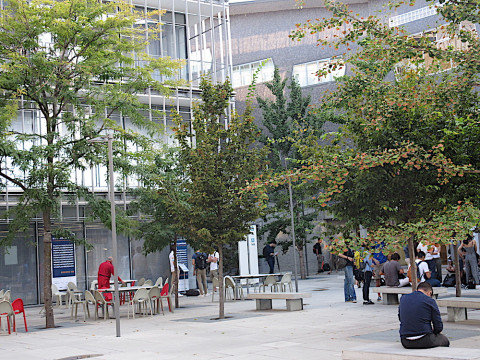Visual Transparency in Schools
Seeing all, seeing better
Seeing all, seeing better

Design can support learning (and remembering!) new material, whether we’re at work, at school, or somewhere else entirely. Using in practice what neuroscientists have unearthed makes “lessons” more productive and positive educational outcomes more likely.
Focus on outdoor spaces

Spaces for learning need to be carefully designed and managed—our brains perform much better in some places that others and our tired heads need opportunities to refresh if they’re going to continue to develop knowledge and skills. Applying what neuroscientists have learned about design-learning connections makes “lessons” more productive and positive experiences more likely.
Professors' inputs
A research team lead by Claesen confirms the value of greenery near elementary school buildings.
Recently completed research confirms that teachers understand that classroom design influences learning outcomes.

Learning is a complicated operation for our brains—design can ease the process, however, whether you're studying at an elementary school or in a corporate learning suite. Applying what neuroscientists know about how design can support learning makes it a more productive and positive experience—even when recess is not an option.
Emotion, performance effects
Hao, Barnes, and Jing investigated the effects of college level active learning on educational outcomes; classroom layouts and furnishings can provide more or less support for active learning.